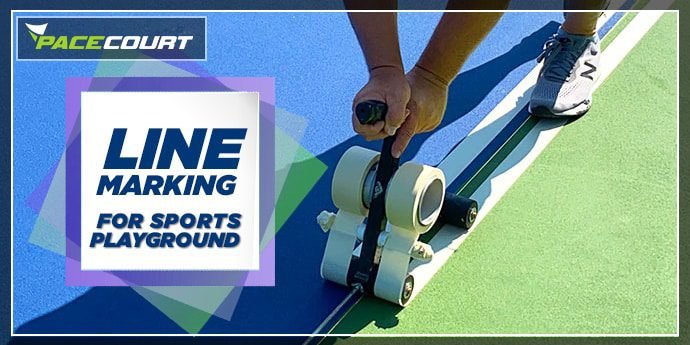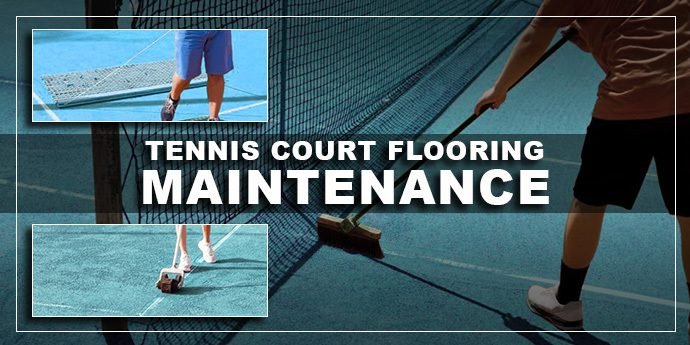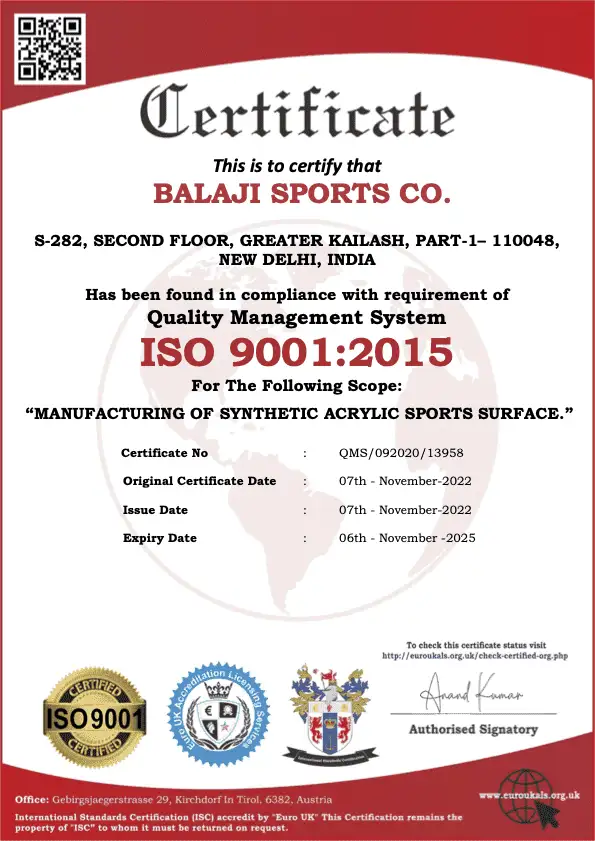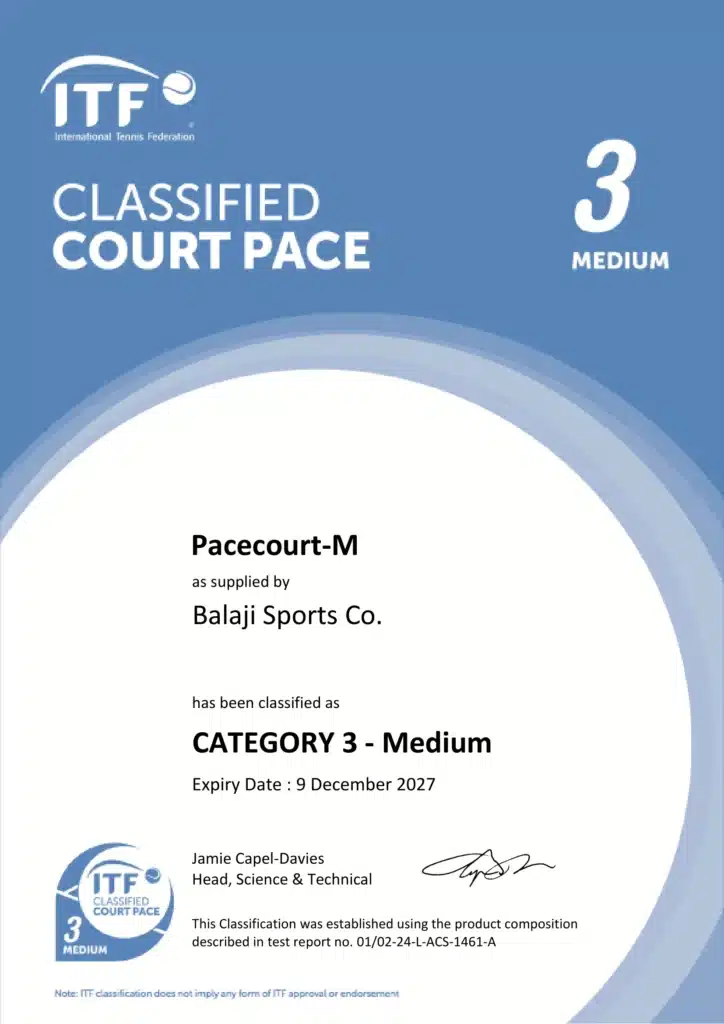Is Tennis Court Line Markings Essential for Sports Playground?
Introduction One of the sports that is most appreciated for its elegance and precision is tennis, where it is vital to define the playing area. The lines on the tennis court for boundaries, services, and other purposes are not only arbitrary markers; rather, they are fundamental components that comprise the court’s laws and design. Both amateur and professional players should pay attention to these lines. In this piece, we’ll argue for outdoor surfaces—especially those composed of acrylic flooring—and explain why tennis courts need to have their lines drawn out. Additionally, a few case studies demonstrate how maintaining these marks has improved players’ games. The Role of Line Markings in Tennis The line markings of a tennis court perform numerous important functions. They indicate the limits of the playing area, indicate the service boxes, and help players comprehend the complex rules of the game. Here are some reasons why these markings are indispensable: The Importance of Using Synthetic Flooring for Tennis Courts When it comes to outdoor tennis courts, the choice of flooring material can significantly impact the quality of the playing experience. Synthetic flooring, particularly acrylic, offers several advantages: The Significance of Precision in Line Markings When it comes to the dimensions of a tennis court, precision in the marking may seem like an issue that is merely cosmetic; however, for players, it is more than just that. Unaligned and worn-out lines can result in arguments, misunderstandings, and occasionally, accidents. Below are reasons why precision is important: Case Studies Case Study: Upgrading a Community Tennis Court A real case study highlighting the advantages of proper line markings and synthetic flooring is discussed below. A community park in an emerging town opted to reconstruct its old tennis court. The old surface had faded lines and cracks that made playing uninteresting at times. Therefore, park management decided on new acrylic surfaces with properly defined line markings. Project Overview: The Process: The first stages of this project involved removing existing surface layers and addressing any structural issues. The following step involved applying a fresh coat of smooth acrylic top coat, which is supposed to endure for a long time. This also meant that in order to make lines stand out immediately and remain visually appealing for a considerable amount of time, black colors had to be used to mark them. Results: The neighborhood tennis players have been swarming the court since it was renovated. Its bright and clear ground markings make it easy for players to comprehend how they should play. The game is more fun than it has ever been because of the surface’s dependability and smoothness, which enable excellent ball control. Positive reports suggest that the park’s investment in a costly outdoor sports facility has pleased the locals. Case Study: Transforming a School’s Sports Facilities One more instance is related to a school that made a decision to improve its sports infrastructure, including tennis courts. The primary objective was to put in place a modern sports facility for the benefit of the students while attracting some local competitions. Decision makers resolved on an acrylic surface with more elaborate markings. Project Overview: The Process: There was a removal of the old courts, and leveling of the ground was done. A high-quality acrylic surface was then installed, followed by precise line markings. The school selected a color scheme that enhanced visibility and complemented the campus’s overall design. Results: Students found the new courts to be an excellent ground to familiarize themselves with, and local sporting bodies were drawn towards them. With well-defined boundary lines, students were assured of learning and practicing their game with a lot of ease. The school has also seen tennis participation rise, emphasizing the benefits that come with having good-quality sports facilities. The Future of Tennis Court Design and Sustainability Synthetic floorings, such as acrylic, may become more and more common with the increasing demand for green sports structures. Moreover, it is difficult to find any other materials that can match their blend of performance, durability, and environmental friendliness. Furthermore, the quality of these surfaces is continuously being enhanced through technological improvements that heighten their lifespan, hence making them appealing for sports complexes. It is imperative that line markings be done correctly, and this cannot be overstated. They are an essential component of the design of the court that affects how much fun a game is overall. Because of this, tennis courts all over the world need to keep spending money on high-quality supplies and precise line marking techniques in order to maintain their aesthetic appeal and standards as time goes on. Expert Guidance for Your Sports Project For any further queries and clarifications, you can get in touch with us Conclusion: The Essential Nature of Line Markings in Tennis Courts In summary, line marking is fundamental to the structure and fairness of tennis; it is not merely a formality. They serve as a boundary marker, aid in player movement guidance, and guarantee that all games are performed in accordance with these established regulations. High-quality synthetic surfaces, like acrylic, have the advantage of being long-lasting, secure, and environmentally benign. The case studies that are being presented demonstrate the transforming power of appropriate synthetic surfaces and line markings on tennis courts. These characteristics increase playability and encourage more people to visit towns, parks, and educational institutions. When it comes to facility proprietors, putting money into precise line markings and premium surfaces amounts to putting money into their sports activities’ future. Notably, clothing like Pacecourt, at the forefront of delivering quality synthetic flooring solutions, inspires hopes for sustainable and environmentally-friendly tennis court designs.






